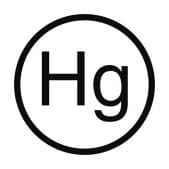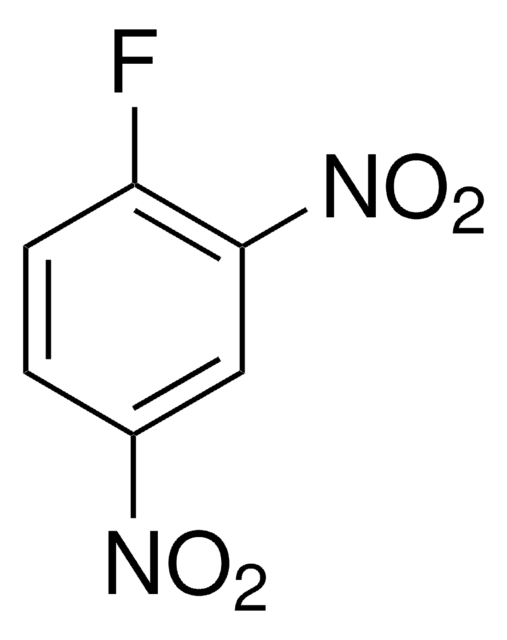C5913
4-Chloromercuribenzoic acid
cysteine active site modifier
Synonyme(s) :
4-(Chloromercurio)benzoic acid, 4-(Hydroxymercuri)benzoic acid
About This Item
Produits recommandés
Description
cysteine active site modifier
Essai
≥98.5% (HPLC)
Forme
powder
Pf
287 °C (dec.) (lit.)
Solubilité
1 M NaOH: 20 mg/mL, clear, colorless
Chaîne SMILES
OC(=O)c1ccc([Hg]Cl)cc1
InChI
1S/C7H5O2.ClH.Hg/c8-7(9)6-4-2-1-3-5-6;;/h2-5H,(H,8,9);1H;/q;;+1/p-1
Clé InChI
YFZOUMNUDGGHIW-UHFFFAOYSA-M
Vous recherchez des produits similaires ? Visite Guide de comparaison des produits
Application
Clause de non-responsabilité

Mention d'avertissement
Danger
Mentions de danger
Conseils de prudence
Classification des risques
Acute Tox. 1 Dermal - Acute Tox. 2 Inhalation - Acute Tox. 2 Oral - Aquatic Acute 1 - Aquatic Chronic 1 - STOT RE 2
Code de la classe de stockage
6.1A - Combustible acute toxic Cat. 1 and 2 / very toxic hazardous materials
Classe de danger pour l'eau (WGK)
WGK 3
Point d'éclair (°F)
Not applicable
Point d'éclair (°C)
Not applicable
Listes réglementaires
Les listes réglementaires sont principalement fournies pour les produits chimiques. Seules des informations limitées peuvent être fournies ici pour les produits non chimiques. L'absence d'indication signifie qu'aucun des composants n'est répertorié. Il incombe à l'utilisateur de s'assurer de l'utilisation sûre et légale du produit.
EU REACH Annex XVII (Restriction List)
Faites votre choix parmi les versions les plus récentes :
Déjà en possession de ce produit ?
Retrouvez la documentation relative aux produits que vous avez récemment achetés dans la Bibliothèque de documents.
Les clients ont également consulté
Articles
Biofiles reviews innovative technologies for cancer research, reflecting the complexity of the disease.
Cancer research innovations address the complexity of the disease, providing advanced technologies for varied applications.
Filtres actifs
Notre équipe de scientifiques dispose d'une expérience dans tous les secteurs de la recherche, notamment en sciences de la vie, science des matériaux, synthèse chimique, chromatographie, analyse et dans de nombreux autres domaines..
Contacter notre Service technique












